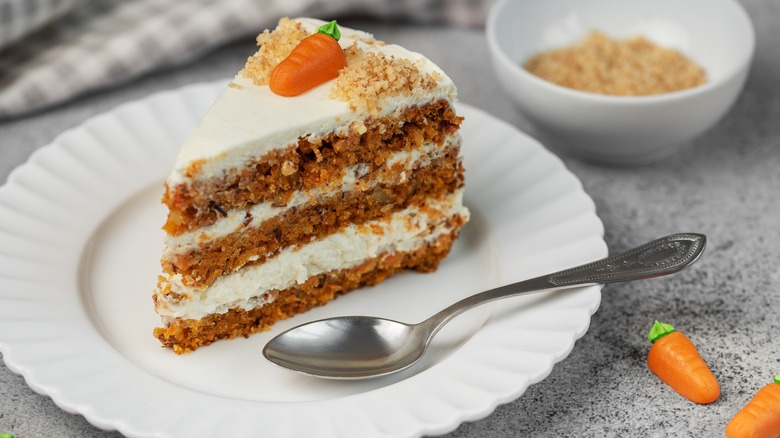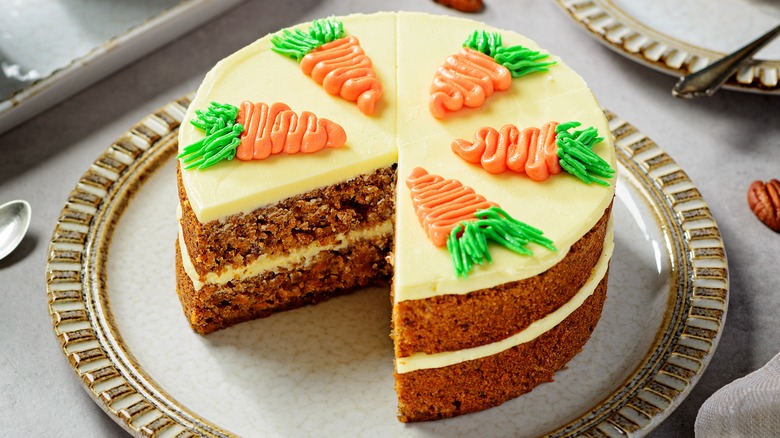Avoid This Common Mistake When Creating A Layered Carrot Cake
We may receive a commission on purchases made from links.
Carrot cake graces many Easter dinner tables as dessert, but it tastes just as good the rest of the year, too. While you could simply pick one up from the grocery store, nothing shows your table love like a homemade cake. Most carrot cakes feature at least two layers, and that is what Food Republic discussed with Bridget Vickers, senior chef-instructor at the Institute of Culinary Education's Los Angeles campus. She told us that, despite being a common baking practice, baking one thick layer and then slicing it into separate layers should be considered "risky business."
"The center is prone to uneven baking," she explained, warning that you risk ending up with a dense, gummy middle while the edges dry out. Baking separate layers — while slightly more work (and more cleanup afterward) — results in more even baking, Vickers told us, yielding a more consistent texture and better structural integrity for stacking and frosting. There's also the fact that cutting a large cake into layers can be a delicate process — one with plenty of room for error that you can avoid by simply baking the layers individually.
Tips and tricks for baking even carrot cake layers
Bridget Vickers also shared tips for getting your carrot cake layers to bake evenly. "Precision is key," she said. "Use a kitchen scale for accurate ingredient measurements." She also recommended leveling your cake pans with baking strips, like these fabric cake strips from Wilton, to ensure even rising. Vickers advised not to over-mix the batter, which is also a simple mixing mistake that ruins quick breads every time. Overmixing can be avoided by stopping as soon as the streaks of flour disappear.
"Under-baking is your enemy," Vickers continued, "as you want to provide a well-baked cake." You can usually tell if your cake is under-baked just by looking at it — the center will still be wet and liquidy. If it's not obvious, try the classic toothpick test: If a toothpick inserted in the center comes out clean, the cake is done. She also recommended lining the bottom and sides of the pan with parchment paper to ensure an easy release — there's nothing worse than a perfect-looking cake that tears when you try to remove it from the pan.
"And finally," Vickers said, "let [the layers] cool completely before frosting — patience, my friend, is the secret ingredient!" Rushing the process is one of those cake-baking mistakes that can easily be avoided. Let the layers rest in their pans for 10 to 15 minutes after removing them from the oven, then take them out to cool fully before decorating.


